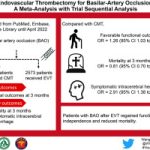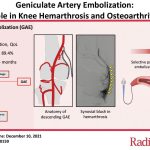
Transformative Philanthropy and the Future of Hybrid Operating Rooms
The recent transformational gift from the Jenkins Charitable Foundation to Tampa General Hospital (TGH) signals a new dawn in advanced healthcare delivery. This visionary donation, channeling nearly $10 million into a state-of-the-art hybrid operating room, is set to revolutionize patient care for those grappling with tricky parts of complex vascular surgery. In this opinion editorial, we explore the multiple layers of this cutting-edge development, discuss its impact on the broader community, and highlight how strategic philanthropy can drive critical advancements in medical infrastructure.
Tampa General has long been recognized as a beacon of innovative healthcare services. The Jenkins Family Hybrid Operating Room, soon to be the facility’s second such unit, stands as a testament to the power of community support and forward-thinking investment. At a time when advancements in medical technology and imaging are evolving rapidly, the integration of surgical spaces with high-caliber imaging capabilities in a single arena is nothing short of transformative.
Advanced Hybrid Surgical Suites in Tampa: A Leap Toward Cutting-Edge Care
When we consider the modern landscape of surgical interventions, the idea of a hybrid operating room represents a giant leap forward. These specialized suites combine the precision of surgical theaters with the real-time imaging offered by interventional suites. For patients who come in with complicated pieces of vascular disease, these innovations are poised to streamline care and improve overall outcomes in ways that were once unthinkable.
Dr. Jean Bismuth, chief of Vascular Surgery and the medical director of the TGH Heart & Vascular Institute, aptly described this new facility as a “game-changer.” His statement underscores a fundamental truth: when technology is harnessed to its fullest, the result is an operating room that efficiently addresses both the immediate surgical needs and the imaging demands of intricate procedures. This synergy is especially crucial when treating patients afflicted by conditions involving tangled issues that have always challenged traditional surgical environments.
Key Benefits of a Hybrid Operating Room for Complex Vascular Conditions
The adoption of a hybrid operating room allows for unprecedented cohesion between surgical intervention and real-time data acquisition. These facilities significantly reduce the intimidating delays and nerve-racking maneuvers that can accompany the transfer of patients between operating rooms and diagnostic imaging units. The direct benefits include:
- Improved precision during surgeries
- Reduced overall time under anesthesia
- Increased safety through integrated imaging
- Smoother transitions between surgical and diagnostic phases
- Better outcomes for patients with complex vascular conditions
This list reflects how combining two traditionally separate functions into one cohesive setting can simplify care and help surgeons find their way through the confusing bits of intricate medical procedures.
Integrating Advanced Imaging: The Essential Role of Technology in Modern Surgery
One of the most impressive aspects of this new hybrid suite is its reliance on advanced imaging technology. In the realm of complex vascular surgeries, the ability to capture accurate and simultaneous imagery while the operation is underway is critical. The imaging component is not merely an accessory—it is the backbone of the procedure, providing real-time guidance that surgeons rely on to make split-second decisions.
In these situations, every image captured can reveal subtle details that might otherwise go unnoticed. Whether it’s a tiny lesion or a critical arterial blockage, these fine shades and hidden complexities require a level of scrutiny that traditional methods simply cannot match. By integrating the latest imaging technologies directly into the surgical suite, Tampa General is positioning itself at the forefront of surgical innovation.
Modern Imaging Technologies and Their Benefits
Delving into the benefits of state-of-the-art imaging in a hybrid operating room brings several key points to light:
- Real-Time Monitoring: Surgeons have access to live feedback, which facilitates immediate course corrections if complications arise.
- Enhanced Precision: High-definition imaging allows for minute observations of anatomical structures, thereby reducing the risk of any surprises during surgery.
- Minimally Invasive Techniques: With better visualization, surgeons can adopt less invasive approaches, which often lead to quicker recovery times for patients.
This fusion of surgical expertise and technological prowess ensures that patients are receiving care that is not only innovative but also aligned with the very best practices in modern medicine.
Philanthropic Leadership and Community Impact: The Jenkins Family Legacy
Behind the innovation stands the inspiring legacy of the Jenkins family. Their unwavering commitment to healthcare innovation, coupled with a deep sense of community responsibility, has been instrumental in shaping Tampa’s medical landscape for over five generations. The Jenkins family’s roots run just as deep as their innovative spirit—since the founding days of Beach Pharmaceuticals in 1957, their contributions have continuously pushed the boundaries of scientific and technological advancements in the healthcare sector.
For Steve and Carole Jenkins, along with their children Laura and Stephen, this latest donation is much more than a monetary gift—it’s a tribute to a history filled with scientific breakthroughs and a promise of ongoing support for quality medical care. Their donation is intended to ensure that TGH remains equipped with the best tools available, enabling the facility to attract top-tier leaders, researchers, and physicians. Through these means, they aim to secure a legacy of excellence in patient care for many years to come.
The Role of Generational Giving in Advancing Healthcare
The Jenkins family’s philanthropic efforts underline a crucial point: sustained, intergenerational giving is essential for the continued success of advanced healthcare facilities. Their approach is grounded in values that include:
- Commitment to Community: Their generosity is aimed at bolstering the health infrastructure of Tampa, ensuring that residents have access to the highest quality care.
- Investing in Innovation: By supporting advanced facilities like hybrid operating rooms, they are directly promoting the integration of new technologies in surgical care.
- Cultural Legacy: Their donation honors decades of family involvement in the pharmaceutical and healthcare industries, fostering a sense of historical continuity and modern progress.
This multi-layered approach to giving demonstrates how a family’s legacy can actively drive innovation in modern healthcare by not only addressing immediate challenges but also building for the future.
Streamlined Care and Improved Patient Outcomes: The Power of Integrated Medical Systems
One of the most significant advantages of the Jenkins Family Hybrid Operating Room is its ability to streamline care for patients with complex medical needs. Often, patients facing challenging vascular conditions can become overwhelmed by the need to move between different specialist units and diagnostic centers. With this new hybrid suite, healthcare professionals can offer a seamless experience that reduces the time between diagnosis and treatment.
The integration of the surgical suite with interventional imaging capabilities means that the fine points of the procedure can be monitored and adjusted in real time. This capability is particularly crucial when confronted with intertwined issues that arise during operations. The outcome is a more efficient treatment process, which not only benefits patients but also optimizes resource allocation within the medical facility.
How Streamlined Care Benefits Patients
The benefits provided by an integrated care model in the hybrid suite include:
| Benefit | Impact on Patient Care |
|---|---|
| Reduced Treatment Time | Minimized exposure to anesthesia and shorter recovery periods |
| Enhanced Safety Protocols | Real-time imaging helps in quickly addressing any unexpected twists and turns during surgery |
| Improved Precision | Direct visualization of subtle details minimizes risks and improves surgical accuracy |
| Integrated Team Approach | More coordinated efforts between medical professionals across specialties |
By effectively merging diagnosis and treatment within a single coordinated environment, TGH is able to offer a level of care that directly targets the nerve-racking challenges faced during complex surgical cases. This integration not only boosts the quality of surgical outcomes but also enhances overall patient satisfaction and trust in modern medical services.
Bridging the Gap Between Modern Medicine and Alternative Approaches
While the focus of the new hybrid operating room is on vascular surgery and other advanced procedures, its impact transcends conventional medical practices. In today’s fast-evolving healthcare landscape, there is an increasing interest in bridging modern medicine with alternative therapies and nutritional support, especially in post-operative care and rehabilitation.
Patients often face overwhelming challenges when recovering from surgery, and holistic approaches that integrate nutritional guidance, physical therapy, and even complementary medicine have proven invaluable. In settings like the hybrid operating room, rapid advancements in surgical outcomes create opportunities for a smoother transition to recovery regimens that include both modern medical care and alternative therapies.
Integrating Complementary Approaches for Enhanced Recovery
Healthcare experts agree that a well-rounded recovery plan can make all the difference. Some of the strategies that have shown promise include:
- Nutritional Support: Tailored diets rich in essential vitamins and minerals can accelerate healing and improve overall health post-surgery.
- Rehabilitative Physical Therapy: Early mobilization and targeted exercises help patients regain strength while reducing the risk of complications.
- Mind-Body Techniques: Practices such as guided meditation and stress management can ease the psychological impact of undergoing major surgery.
- Integrative Pain Management: Combining pharmacological and non-pharmacological therapies to more effectively manage post-operative pain.
Through synergy between advanced surgical care and complementary therapies, patients are positioned to achieve faster recoveries and enjoy improved long-term health outcomes. In this sense, the hybrid operating room is part of a larger movement to harness the positive impacts of both modern medical technology and alternative healing approaches.
Tackling Tricky Parts: Overcoming the Challenges in Complex Vascular Surgeries
Complex vascular surgeries have always been riddled with challenges that stem from the tricky parts of human anatomy and the unpredictable nature of individual diseases. The integration of an advanced imaging system within the surgical space is a direct response to these challenges. It provides surgeons with the tools they need to tackle the complicated pieces of intricate vascular conditions head-on.
Surgeons and other healthcare professionals often face situations laden with unexpected twists and turns during procedures. Given the intimidating obstacles posed by these tangled issues, having a system that allows for continuous, real-time monitoring is essential. This capability not only minimizes the risk of complications during the operation but also enhances the surgical team’s confidence in dealing with challenging scenarios.
Overcoming Tricky Parts with Technology
An integrated hybrid operating room offers several ways to connect surgical procedures with dynamic imaging techniques:
- Immediate Feedback: Real-time monitoring means that if a twist or turn emerges unexpectedly, the surgical team can promptly adjust their strategy.
- Enhanced Collaboration: Integrated imaging facilitates better team communication and coordination, ensuring every subtle detail is observed and addressed.
- Continuous Assessment: Instead of relying on periodic imaging checks, the new system provides a constant stream of data throughout the procedure, helping to figure a path through any nerve-racking hurdles.
This advanced method of working through surgical challenges is a clear indicator of how technology can simplify the treatment of vascular diseases that traditionally required separate diagnostic procedures and surgical interventions.
Enhancing Community Health: The Ripple Effects of Advanced Healthcare Facilities
While the focus on high-end medical technology is essential, it is equally important to consider how these advancements impact the broader community. Tampa General Hospital’s commitment to innovation extends beyond the confines of its campus; it directly benefits the Tampa Bay community by setting new standards for patient care.
For residents across the region, the availability of a hybrid operating room means access to cutting-edge care that might otherwise require travel to distant, specialized centers. This development helps ease the anxiety many patients feel about traveling for treatments, steering through the intimidating aspects of complex care with greater local support. The hybrid room’s capabilities ensure that patients receive efficient, streamlined care right in their own community.
Community Benefits of Modern Integrated Healthcare
The positive community impact of advanced healthcare facilities is multi-dimensional, including:
- Local Access: High-quality surgical procedures are available to more residents, reducing the need for extensive travel.
- Economic Boost: Cutting-edge facilities attract top talent and can spur further investment in the region’s healthcare infrastructure.
- Improved Overall Health: Better treatment outcomes lead to shorter hospital stays and quicker returns to normal life, bolstering public health.
- Enhanced Confidence in Local Care: When residents see their community investing in advanced medical technology, it fosters a sense of trust and security regarding their healthcare provision.
This ripple-effect of improved healthcare extends far beyond the walls of the operating room. It injects hope and possibility into the community—an acknowledgment that modern medicine, when supported by visionary donors and a dedicated professional team, can create a tangible difference in people’s lives.
Philanthropy and Innovation: Making a Lasting Impact on Healthcare
Every transformational gift shapes healthcare in more ways than one. The Jenkins family’s donation does not only provide the funds necessary to construct a sophisticated hybrid operating room; it also sends a powerful message about the role of community and philanthropy in forging innovative medical solutions. Their support acts as a reminder that medical professionals, innovators, researchers, and community leaders must work in tandem to overcome the intimidating obstacles that arise in modern healthcare.
This donation is part of Tampa General Hospital Foundation’s “Elevating Excellence: Innovating Tomorrow’s TGH” campaign—a clearly articulated commitment to future-proofing healthcare delivery. Through such forward-looking initiatives, hospitals and medical centers can harness community trust and philanthropic leadership to address both immediate clinical challenges and the long-term evolution of patient care strategies.
How Philanthropic Leadership Drives Innovation
Philanthropy in healthcare plays a critical role in nurturing the kind of innovative spirit that is essential for breakthroughs. Key aspects include:
- Strategic Investment in Technology: Donations like these provide the capital required to incorporate the latest advancements into everyday medical practice.
- Boosting Research and Development: With fresh resources, institutions can fund research initiatives which might lead to further improvements in surgical methods and patient care.
- Attracting Top Talent: State-of-the-art facilities are magnetic for leading medical professionals and researchers who wish to work in environments that are committed to excellence.
- Inspiring Future Generations: Generational giving sets a legacy of continuous improvement and community involvement, encouraging younger family members and the broader public to engage in similar acts of kindness and innovation.
By making a vision-driven philanthropic commitment, donors not only enhance tangible healthcare infrastructure but also inspire an entire community to invest in the future of medicine. This layering of support solidifies trust between healthcare providers and the public, paving the way for a healthier, more resilient community.
A Closer Look at the Implications for the Surgical Community
For surgeons, nurses, and the entire medical team, the enhanced capabilities provided by a hybrid operating room are invaluable. It means having the super important tools necessary to perform intricate surgeries with confidence while mitigating nerve-racking uncertainties. The blend of cutting-edge imaging with modern surgical techniques is particularly relevant in an age where patient expectations and the complexity of medical conditions continue to rise.
Moreover, this kind of advanced surgical environment allows healthcare professionals to effectively figure a path through the challenging bits that typically complicate procedures. For instance, in the case of vascular surgeries, the inherent difficulty of navigating tangled issues such as unpredictable blood flow and varying vessel integrity demands a system that can constantly adjust to new data. With the hybrid operating room, every subtle detail is monitored, every twist is observed, and the surgical team is empowered to react swiftly and effectively.
The Medical Team’s Perspective: Embracing Innovation in Daily Practice
From the perspective of a healthcare provider, the integration of advanced imaging systems into the operating room translates into several daily benefits:
- Enhanced Decision-Making: Surgeons can make informed decisions on the fly thanks to real-time data.
- Reduced Operational Stress: With streamlined processes and improved safety, the team experiences a more collaborative and less nerve-racking environment.
- Improved Training Opportunities: A high-tech environment offers educators a robust platform to teach upcoming medical professionals about both the little details of procedures and overall treatment strategies.
- Heightened Efficiency: With less time spent transferring patients between different specialized units, the team can focus more on providing patient-centered care.
Such a dynamic and supportive setting helps build a culture of excellence that encourages continuous learning and a commitment to addressing the subtle parts of every new challenge the surgical team may encounter.
Looking Ahead: The Future of Hybrid Operating Rooms in Modern Healthcare
The introduction of the Jenkins Family Hybrid Operating Room is not the end of the road—rather, it is a stepping stone toward a future where integrated surgical environments become the norm rather than the exception. With the ongoing construction of the Taneja Surgical, Neuroscience & Transplant Tower on the Davis Islands campus, Tampa General Hospital is clearly staking its claim as a leader in both traditional and innovative medical practices.
As the medical landscape continues to evolve, we can expect further investments and technological advancements that will work through the challenging bits of modern healthcare. These developments have the potential to:
- Enhance surgical outcomes even more significantly
- Reduce the risks associated with complicated procedures
- Improve overall patient satisfaction and recovery times
- Provide a model for other hospitals looking to strike the right balance between advanced technology and compassionate care
The momentum generated by this donation underpins a larger conversation about how hospitals everywhere can work through the daunting challenges posed by increasingly complex patient needs. By investing in facilities that blend technology with hands-on expertise, healthcare providers are taking the wheel toward a future where every patient benefits from the best of both worlds.
Community Reflections and the Broader Implications for Healthcare Excellence
From a community standpoint, this initiative reinforces the notion that healthcare is a collective endeavor. It is not simply about having access to advanced surgical instruments or modern operating rooms; it is about creating an environment where every patient, regardless of their background, can expect to receive super important care that addresses both the physical and psychological burdens of serious medical conditions.
The Jenkins family’s philanthropic vision resonates deeply with those who have seen first-hand the benefits of coordinated, high-caliber care. Their donation represents a commitment to ensuring that sophisticated medical care is never off-limits, and that the art of healing continues to thrive amidst the confusing bits and tangled issues inherent in complex vascular and surgical conditions.
How Community Engagement Drives Healthcare Innovation
The lasting impact of such community-driven healthcare initiatives is multifaceted. Consider the following points:
- Increased Awareness: Community engagement initiatives help the public understand the importance of integrated healthcare systems, leading to widespread support for innovation.
- Collaborative Partnerships: Donations like this encourage future partnerships between hospitals, research institutions, and philanthropic organizations, all aiming for the same overarching goal—better patient outcomes.
- Local Economic Growth: As healthcare facilities expand and modernize, they often spur economic growth by attracting highly skilled professionals and creating new job opportunities.
- Setting a Benchmark: A state-of-the-art facility like the hybrid operating room sets a high standard for other hospitals, encouraging a competitive spirit that ultimately benefits the entire healthcare ecosystem.
Such community-informed strategies are central to advancing healthcare excellence. When hospitals work hand in hand with generous donors and community advocates, the resulting innovations pave the way for a new generation of medical breakthroughs—ones where the confusing bits become manageable, and the complicated pieces of care are transformed into a streamlined, patient-centered approach.
Conclusion: A Vision for Tomorrow’s Healthcare
The Jenkins Family Hybrid Operating Room is more than a physical space—it is a symbol of progress, a demonstration of how philanthropic leadership and innovative technology can converge to change lives. As Tampa General Hospital continues to expand its capabilities with future projects like the Taneja Surgical, Neuroscience & Transplant Tower, the community is reminded that every donor contribution, every technological upgrade, and every collaborative effort is a step forward in this exciting journey toward modern, high-quality healthcare.
Looking forward, the integration of advanced imaging with surgical practice in hybrid operating rooms will help healthcare providers not only manage but also anticipate the tricky parts and hidden complexities of today’s medical challenges. It is only through these investment-driven advances that healthcare systems can ensure that every patient’s journey—from diagnosis to recovery—is as efficient, safe, and compassionate as possible.
With the combined efforts of visionary donors, skilled medical professionals, and an engaged community, the future of healthcare in Tampa—and indeed across the country—appears brighter than ever. The ongoing evolution in hybrid operating room technology is a reminder that even the most intimidating and nerve-racking medical challenges can be overcome with innovation, dedication, and a shared commitment to excellence. This project is a beacon of hope, encouraging us all to work through the twists and turns of modern medicine while keeping the well-being of each patient at the heart of every initiative.
As we celebrate this remarkable achievement, we must also look ahead with optimism and resolve. The path forward is laden with opportunities to enhance patient care, improve surgical outcomes, and fundamentally transform the way we approach complex medical challenges. And it is initiatives like these—rooted in visionary philanthropy and cutting-edge technology—that remind us that when communities unite in the spirit of generosity and innovation, even the most confusing bits and intertwined issues can be approached with clarity, precision, and finally, hope for a healthier tomorrow.
In closing, it is imperative that we not only applaud this pioneering effort by the Jenkins family and Tampa General Hospital but also continue to support and prioritize advancements in healthcare infrastructure that offer integrated solutions for both modern and alternative medical practices. As the healthcare community moves forward, together we can ensure that every patient benefits from a system that truly understands and embraces the intricate yet achievable journey toward comprehensive, one-stop care.
Originally Post From https://southfloridahospitalnews.com/tampa-general-hospital-foundation-announces-transformative-gift-to-create-a-new-hybrid-operating-room/
Read more about this topic at
Advancing Surgical Innovation Through Research | CASIT …
Advancing Surgical Innovation: An Introduction to a Special Series …


